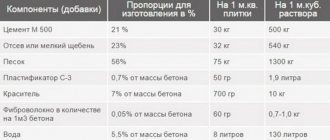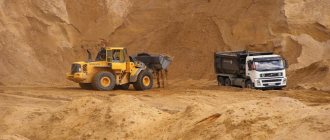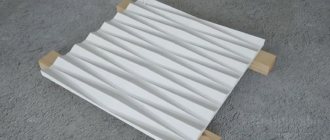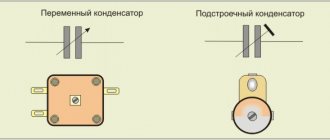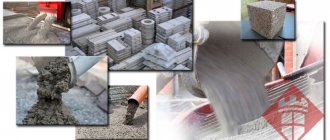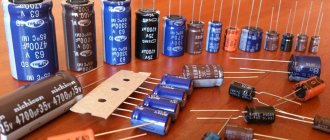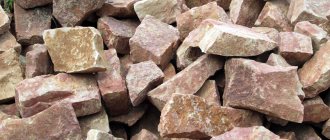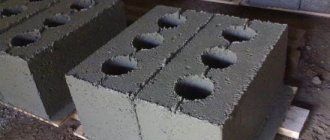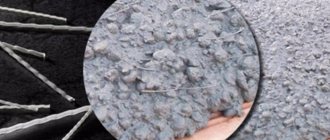Description and properties of glass fiber reinforced concrete
in the composition of glass fiber reinforced concrete in the form of fiber fiber, hence the name of the hero of the article. Instead of reinforcement, it is strengthened by thin mineral threads. They are mineral because glass is made from melted quartz, a silicate stone.
It includes rocks containing silicon. In the periodic table the element is written as silitsum. It turns out that the composition of the hero of the article is natural, because cement also includes natural raw materials: clay, lime, sand.
Glass threads “baked” in concrete look like sawdust or hay rolled in clay. However, being mineral, the reinforcement completely eliminates the possibility of rotting. In addition, glass is not inferior to concrete in hardness.
At the same time, the strength of glass fiber blocks is greater than that of reinforced concrete. Steel reinforcement holds compressive loads well. And the glass reinforcement also bears significant loads in bending and tension. The impact strength of the hero of the article is also greater than that of reinforced concrete.
Concrete and fibers adhere to their surfaces. The overlap area of the two materials reaches 50,000 square meters. They are responsible for the joint work of concrete and fiberglass.
If blocks with steel reinforcement crack under the pressure of tensile forces, then fiberboards do not even give microcracks. Glass concrete is used on bridges, overpasses and overpasses.
If we translate what has been said into numbers, the tensile strength of the hero of the article under compression is equal to 32.2 megapascals. When compressed, the material can withstand 840 kilos per square centimeter. In axial tension, fiber-reinforced concrete can withstand up to 112 kilograms for the same area.
Products made from glass fiber reinforced concrete contain fiberglass both evenly throughout the “body” and in certain areas. This allows you to vary the characteristics of the material.
You can also “play” with them by combining reinforcing threads of different diameters and lengths. The maximum length of one glass wire in concrete is 7.5 centimeters.
The combination and arrangement of different-sized fibers not only change the properties of concrete, but also its texture and shape. Some mixtures, for example, are more plastic than others, are used for shaped castings. We will talk about their range in the chapter “Use of glass fiber reinforced concrete”.
A number of properties of the hero of the article coincide with the characteristics of simple concrete. Mineral blocks do not burn. Moreover, the fiber variety has greater flame resistance. The hero of the article is also superior to ordinary concrete in its resistance to chemicals.
In urban environments, resistance to salt solutions is especially important. Like standard concrete, glass material does not rot and is frost-resistant. The cold resistance class ranges from F150-F300.
At the same time, low frost resistance corresponds to 50 units, and the maximum is displayed as F-700. Concrete in the range from 300 to 500 is used in conditions of variable moisture levels. Frost resistance of glass slabs is respectable for standard conditions.
DEFINITION
Glass fiber-reinforced concrete (GFRC) is a type of fiber-reinforced concrete and is made from fine-grained concrete (matrix concrete) and reinforcing pieces of glass fiber (fibers), evenly distributed throughout the volume of the concrete product or its individual parts (zones). The compatibility of concrete and fibers is ensured by adhesion on their surface; Thus, a huge area of overlapping concrete and fibers works (from 10,000 to 50,000 m2, depending on the purpose of the resulting material), forming qualitatively new properties of the new material - glass fiber reinforced concrete.
Expansion of production and use of glass fiber reinforced concrete structures is an important reserve for reducing construction costs, saving labor costs, increasing the operational reliability and durability of building structures.
Dispersed reinforcement not only increases the strength properties of concrete, but, most importantly, improves the operational characteristics of structures, for example, resistance to dynamic, temperature and humidity influences, wear, etc., which makes it possible to obtain a significant effect in the production and operation of glass fiber reinforced concrete structures.
According to their purpose, glass fiber reinforced concrete is divided into structural, waterproofing, decorative and special. Based on the purpose of glass fiber reinforced concrete, they are given the appropriate properties through a combination of short-fiber and long-fiber elements of glass fiber reinforcement and manufacturing technology.
Glass fiber reinforced concrete has exceptionally high technological properties when forming products of almost any desired shape, has high bending strength, high impact strength, elasticity, crack resistance, water resistance, and, in necessary cases, a decorative surface.
Fiberglass-reinforced concrete provides the architect with a means of realizing his vision, with which no other material can compete in terms of plasticity, ability to convey surface relief, and lightness. Glass fiber reinforced concrete is lightweight, easy to process, and has low installation and transportation costs; creates a reduction in the load on the load-bearing structure of buildings, which provides a significant reduction in the costs of constructing the foundation and frame of the building, which is important during restoration and reconstruction; has low water permeability; fire resistant.
Types of glass fiber reinforced concrete
The hero of the article belongs to the class of fiber-reinforced concrete. They are reinforced not only with glass, but also with steel threads or polymer fiber. The latter includes, for example, polyamide, acrylic, polypropylene, nylon.
With metal shavings, the blocks weigh no less than classic reinforced concrete. With polymer reinforcement, the slabs are lightweight, like aerated concrete. Glass blocks are averaged by weight. However, there is a catch here, because in terms of reinforcement there are:
- Blocks with fiber reinforcement. In such cases, the role of reinforcement is performed exclusively by glass fiber. With it, the slabs can take on any shape. Panels are cast in the form of a palisade from bamboo trunks, natural stone masonry, and abstractions.
- Blocks with combined reinforcement. These are reinforced with classic steel rods and fiberglass at the same time. Due to the rigid frame, the slabs can only be of simple shapes. As a rule, these are rectangular elements.
Combined reinforcement is not only combined with metal. Glass is also combined with polymer threads. In this case, the mass, like standard blocks, takes any shape.
For example, facade decor made of glass fiber reinforced concrete . Gypsum stucco is inferior to it, because it is soft and absorbs moisture. The pilasters from the hero of the article have been decorating buildings for centuries.
You can get acquainted with the decor, for example, in the Kazan Kremlin. This is the name of a museum-reserve with a complex of buildings in a classical style. The museum is located, as the name suggests, in Kazan.
The production of fiberglass concrete has been established there . Therefore, in the city, the hero of the article is made up of a whole microdistrict in the center. In Kazan, it’s also worth taking a look at the “Palace of Farmers”. This is the name given to the building of the Ministry of Agriculture of the Republic of Tatarstan, whose capital is Kazan, for its solemn style.
Fiber-reinforced concrete used in Kazan is produced in 2 ways:
- Spraying. With its help, objects of medium and large sizes are obtained. Start by spraying cement. It is applied to the mold, adding fiberglass along the way.
- Premix. This is the name given to the process of casting a mixture of cement, sand, glass fiber and water into a mold. It can be made of wood, silicone or metal. Place the mixture in the container on a vibrating table. This compacts the material. Filling is justified when making small products, for example, tiles or paving slabs. The latter is also made from glass concrete.
In decorative terms, the hero of the article is multi-colored. Glass slabs are painted in red, blue, brown, yellow tones. The nuance lies in the glass. It remains white. The result is a textured pattern. If plain blocks are needed, colored glass is added to them, coloring it at the melt stage.
Application and installation of glass fiber reinforced concrete
The conversation about using the hero of the article has already begun. It can be used as the main building material, but is not cost-effective. It is easier to build a house from ordinary concrete. Glass plates are used, as a rule, for cladding and decoration. Not only pilasters are cast, but also columns, fences of loggias and balconies, and “crowns” of domes.
Glass fiber reinforced concrete for the facade is an opportunity to decorate it with elements of heraldry and ornaments. Slabs are made with a geometric pattern, rough, even to resemble a tortoise shell.
Unlike ordinary glass concrete, a large fraction of sand and gravel is not added. This gives the surface of the blocks greater aesthetics. The ends of monolithic floors of high-rise buildings, for example, are usually covered with glass fiber reinforced concrete slabs. Miniature versions of them become roofing material. It imitates classic tiles.
Installation of glass fiber reinforced concrete is carried out according to two schemes. The first is considered classic, and the second is used in structures that require exceptional strength:
- Fastening with mounting bulges. They are made at the casting stage, reaching a width of 3 cm. The thickenings are cast according to the design. Accordingly, instead of standard blocks, unique ones are made. This adds an item of value to the hero.
Concrete elements are secured in places of thickening with anchors. This is a type of bolt. The scheme works on building facades.
- Fastening with a metal mortgage. It is implanted into the body of the block also at the production stage. A fastener in the form of a bolt passes through the mortgage. It is “implanted” into the metal frame of the building.
Whatever the method of fastening fiberglass concrete, installation begins with preparing the surface and marking it. Then the corner parts are placed. Then the straight sections are filled.
The masonry is calculated without the use of extensions less than half a block wide. Fix glass concrete with construction adhesive. The seams are rubbed. If there are joints with foreign surfaces, use an acrylic-based sealant.
The role of glass fiber reinforced concrete in construction
The high technological characteristics of glass fiber reinforced concrete have made this material indispensable in a wide range of construction works:
- Wall cladding panels made of glass fiber reinforced concrete are used as architectural decoration of special purpose buildings.
- In serial unified construction, glass fiber reinforced concrete products can be used as modular elements.
- It is used in the form of cladding panels during the reconstruction of old buildings.
- It is used for framing window openings, in the manufacture of sun screens, cornices, porticos, etc.
- Glass fiber reinforced concrete gives structures an aesthetic appearance, therefore it is indispensable when designing urban recreation areas: arranging picturesque decorative ponds, making kiosks, fountains, flower beds, benches, balustrades.
- Ideal for bridge construction. Glass fiber reinforced concrete is used for the manufacture of elements of noise barriers and parapets.
- This thin-walled and lightweight material is used in the production of elements of channels and water pipes.
Structures in which glass fiber reinforced concrete is used primarily operate under impact loads, bending, abrasion and punching. They are able to withstand the influence of various mechanical and physical factors, so their service life is tens or even hundreds of years.
Glass fiber reinforced concrete price
The price of glass fiber reinforced concrete is determined by a number of factors. The costs of production, processing, shape, and hydrophobization are included. The latter concept means additional impregnation of concrete, 100% protecting it from the destructive effects of water.
If it penetrates the pores of the material and hardens there, it will expand, at the same time expanding the cavity in the stone. This is how moisture tears the slabs from the inside. By protecting the blocks from water, their life is extended.
Included in the price of the article's hero and its coloring. It turns out to be about 30% more than what they ask for for classic concrete. However, given the light weight of glass blocks and their smaller thickness, the cost of delivery and installation is reduced.
Renting equipment also costs less. In addition, lightweight slabs reduce the load on the foundation of the building, which in some cases is absolutely priceless. They are also willing to overpay for the strength and durability of the hero of the article.
It was he, for example, who was chosen for engineering structures on the Moscow Ring Road. On the Third Transport Ring in the capital, fiberglass concrete became permanent formwork, and at the same time the cladding of span structures and overpasses.
